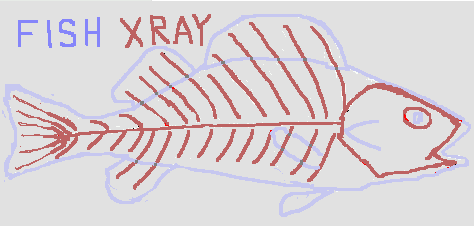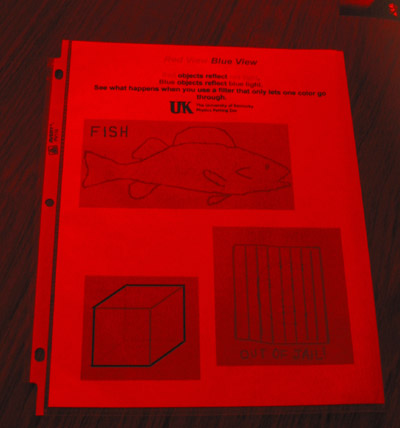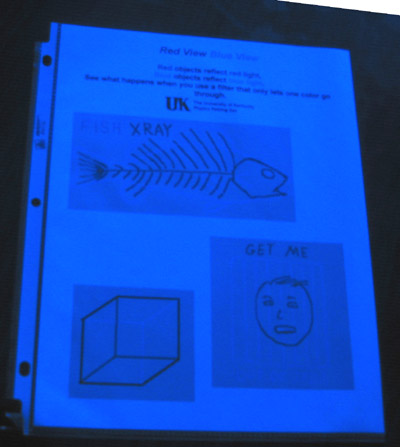
Instructions for:
Red View/Blue View
Almost all objects reflect light; this is what enables us to see them. Some objects, like a mirror, reflect all wavelengths of light in a very constant manner, allowing the formation of visible images in their reflections. Most objects however, reflect only certain wavelengths, and do not redirect light in a predictable direction (like a mirror). These objects, like an ordinary piece of paper or block of wood, do not produce reflected images.
Normal white light is actually composed of a wide spectrum of colored light. When an object appears to be a certain color, a red apple for instance, it is actually reflecting red light, and absorbing all other colors. The white light that strikes the apple from the sun is indeed many different colored beams combined. When the light hits the apple, the red wavelengths bounce back, while the other colors are absorbed into the apple. We see only the red reflection, thereby producing the red color of the apple. This is true of all colored objects.
Special color filters (such as the ones included with this activity) appear transparent (yet only one color), and only allow light from a narrow band of wavelengths pass through. A blue filter absorbs all light whose wavelength does not fall within the range of blue light; hence, all objects seen through a blue filter appear blue. A red filter works in the same way; only red light is allowed to pass through. If a picture is drawn using red, blue and gray colors, viewing through different filters will have surprising results. With the unaided eye, the picture is clear and colorful, with red, blue and gray areas. When a red colored filter is used, the red lines disappear, exactly matching the gray background (the gray ink reflects many wavelengths of light, but only the red wavelengths pass through the filter, indistinguishable from the red light reflected from the red ink). The blue lines appear very clearly, as dark lines (they donít look blue anymore) This is because the blue ink does not reflect any red light; therefore none of the light reflected towards the filter is allowed to pass through, making the once blue lines essentially appear black Ė the absence of light.


The gray background is used to cancel some of the effects of ambient colored light that would be reflected from a normal white paper background. Ink applied to a page will decrease the intensity of the light reflected; an effect which is visible through the filter regardless of color. By making the whole page reflect with equal intensity (by applying a gray background, and covering the whole image uniformly with ink), the color trick is made more dramatic.
Try looking at the red and blue picture through both color filters individually. What happens when both filters are combined to make one two-step filter?
Copyright 2004 Straley/Pinney - The University of Kentucky Physics Petting Zoo